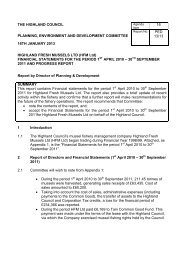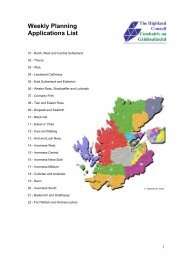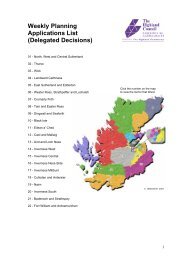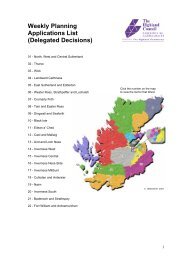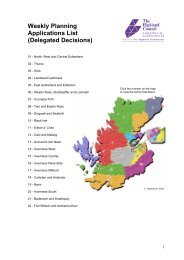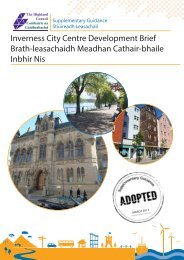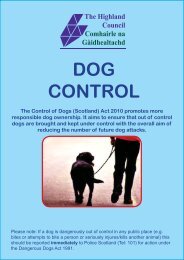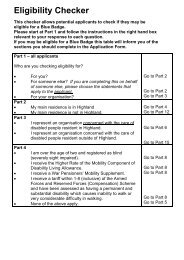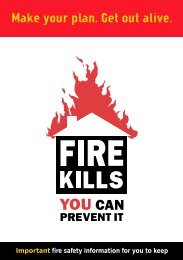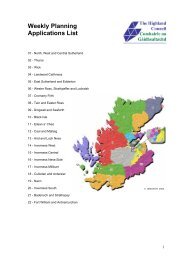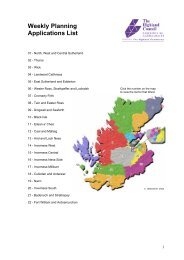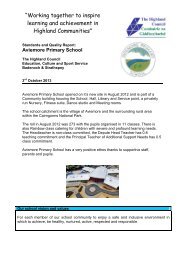A Single Strategy for Sensory Needs - The Highland Council
A Single Strategy for Sensory Needs - The Highland Council
A Single Strategy for Sensory Needs - The Highland Council
You also want an ePaper? Increase the reach of your titles
YUMPU automatically turns print PDFs into web optimized ePapers that Google loves.
Table 5: Prevalence of Need in General/Local Population (under 16)<br />
Type Under 5 5-15 Total<br />
Registered Blind 28 20 48<br />
Registered Partially Sighted 17 56 73<br />
In <strong>Highland</strong> the<br />
number of<br />
children<br />
recognised<br />
with visual<br />
impairment<br />
has risen over<br />
the last 2 years<br />
from 40 to 120.<br />
Deafblindness<br />
Persons are regarded as deafblind if they have a severe degree of combined visual and<br />
auditory impairment resulting in problems of communication, in<strong>for</strong>mation and mobility. <strong>The</strong><br />
group includes people with visual and hearing needs from birth or early childhood and those<br />
who develop dual sensory needs in adult life.<br />
Deafblind people are a minority group with high needs. Older people <strong>for</strong>m the majority of this<br />
group. Precise figures <strong>for</strong> the incidence of deafblindess in <strong>Highland</strong> are not easy to obtain but<br />
a total of 200 has been indicated – this is probably an underestimate. <strong>The</strong> provision of services<br />
is challenged by small numbers scattered over a wide geographical area.<br />
20<br />
Around 75% of<br />
blind and<br />
partially sighted<br />
people of<br />
working age are<br />
unemployed.<br />
RNIB



